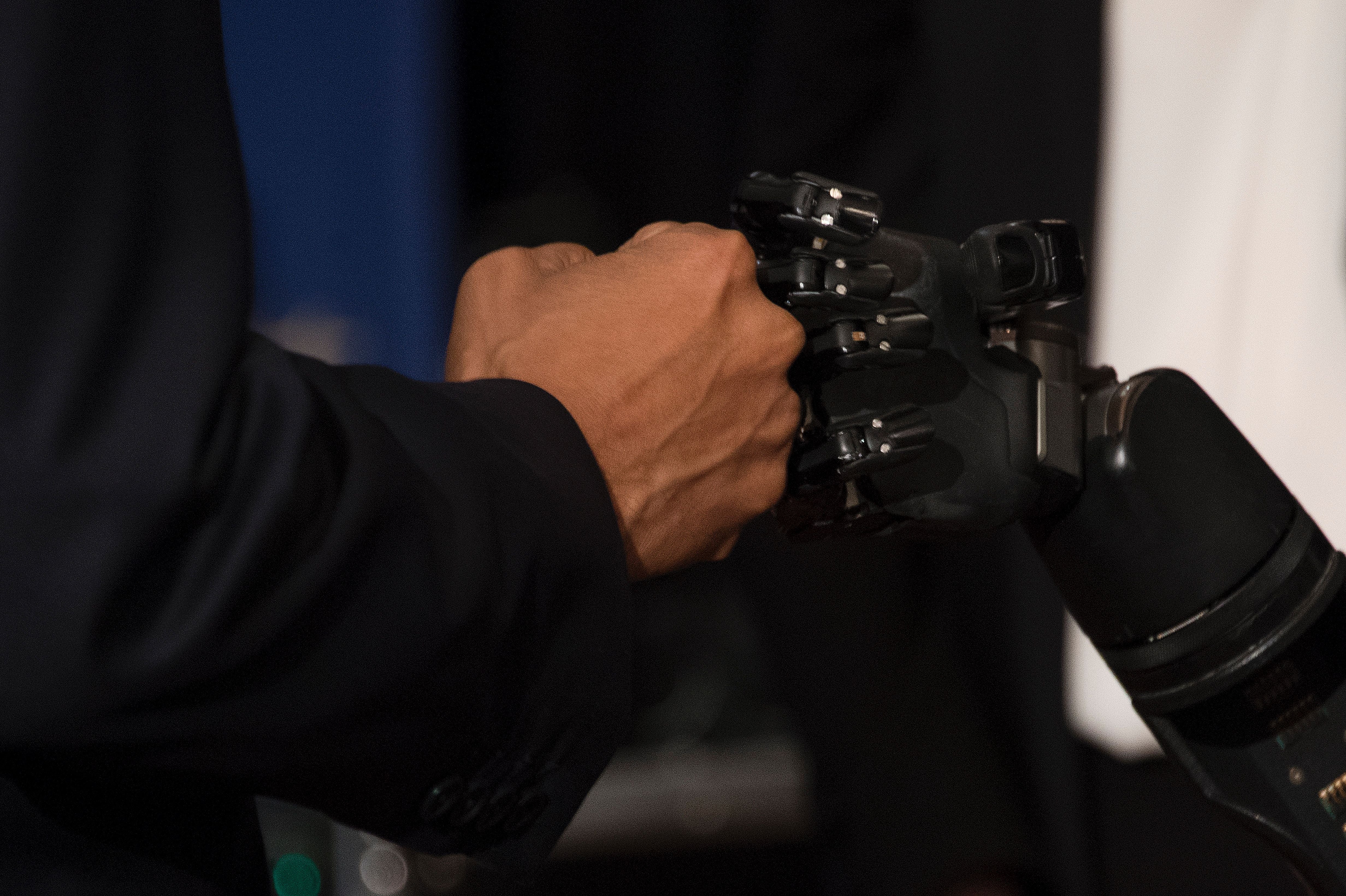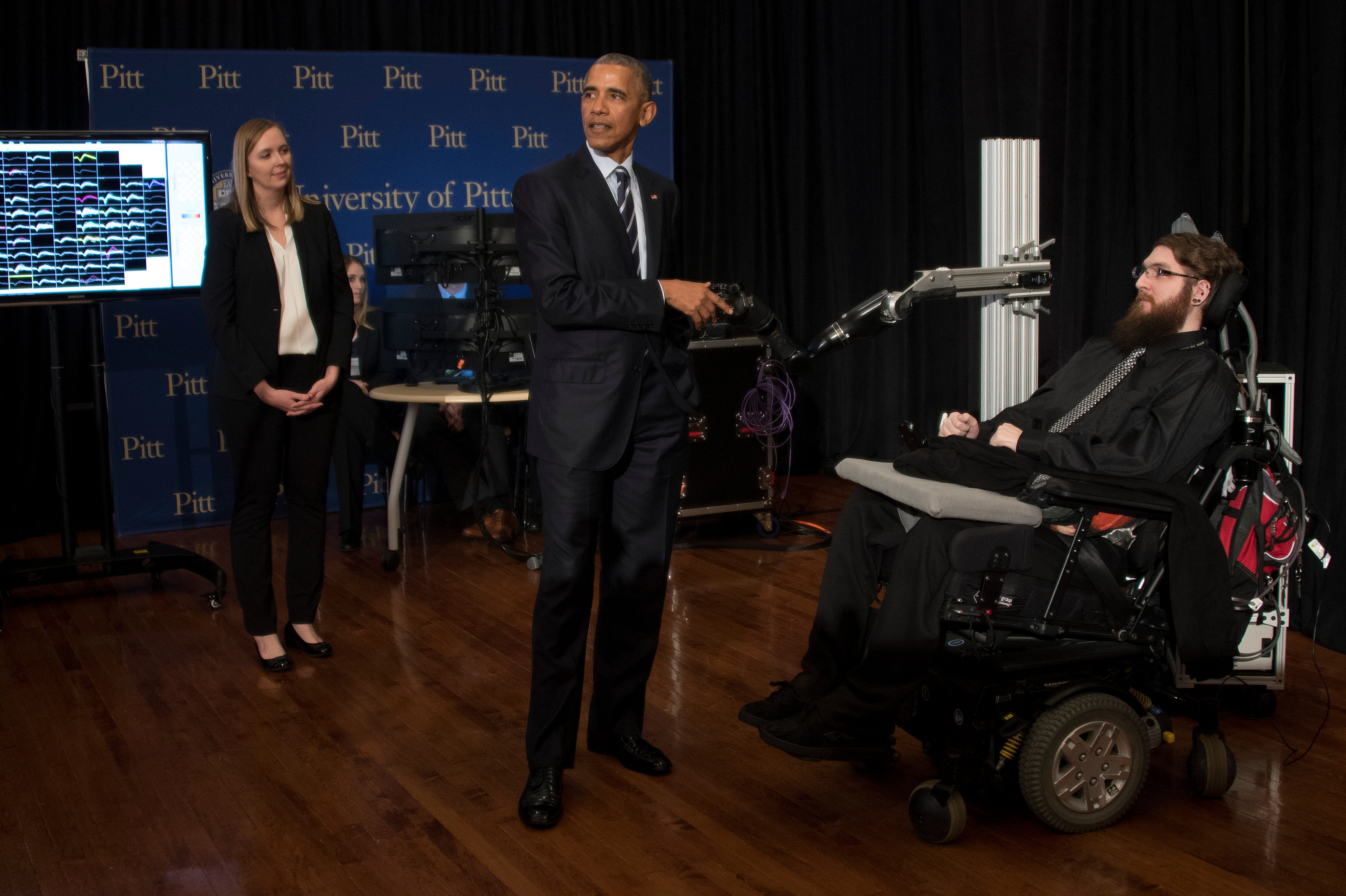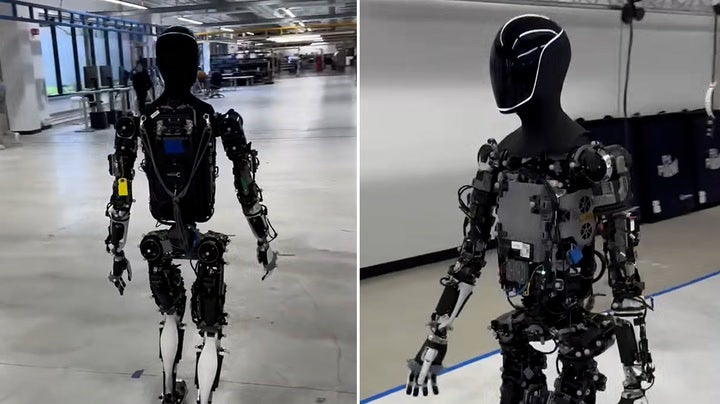Why Elon Musk thinks his Neuralink brain chip will unleash human potential
Neuralink’s announcement that it had implanted a chip in a person’s brain is a glimpse at a future that could change what it means to be human, writes Andrew Griffin. But what would it really mean to control our phone or computer, and through them almost any device, just by thinking?


“This is unbelievable,” said Barack Obama in 2016. “Nathan is moving this hand with his brain.”
It isn’t normally the kind of activity that elicits surprise. Usually, moving one’s hand doesn’t even elicit a thought; the kind of movement that happens continually, throughout the day, not so much unbelievably as unconsciously.
But Obama was right to be shocked.
Some 12 years earlier, Nathan Copeland was driving at night, in the rain. His car crashed and his neck snapped – injuries to his spinal cord meant that he was left with quadriplegia. He couldn’t move or feel anything below his upper chest, and his life changed in an instant.
Soon after, he registered for a study on brain-computer interfaces at the University of Pittsburgh. A decade later he was invited to take part – a process that saw him screened and then have tiny sets of little electrodes placed into his brain.
It gave him feeling back. In a statement at the time he said he could “feel just about every finger – it’s a really weird sensation”.

It also allowed Mr Copeland to control the robotic hand that gave Obama that fist bump. Since then, he has gone on to break the record for wearing a brain-computer interface for the longest amount of time, using it to control not just the robotic hand but other external devices, including video games.
Mr Copeland has said he considers himself a cyborg – and he might also be an important pioneer. Today, all around the world, a small but growing community of engineers, neuroscientists and other experts are building systems to allow more people to have those brain-computer interfaces, or BCIs, implanted, and to control a growing number of devices.

One very notable part of that community is Neuralink, famous less for its work and more for the man at the head of it, Elon Musk. Neuralink makes a small chip – coin-shaped and sized, with wires stretching out of it – that can be placed under the skull and sewn into the brain to try and read its activity. In January, Mr Musk announced that Neuralink had implanted a chip in the human brain for the first time.
Now, Neuralink has shown the patient, 29 year-old Noland Arbaugh, who was paralysed below the shoulder after a car accident, playing chess and moving a computer cursor using the brain implant.
“The surgery was super easy,” Mr Arbaugh said in a video streamed on X. “I literally was released from the hospital a day later. I have no cognitive impairments.”
At the time of the implant, Mr Musk wrote a series of posts on X. “The first Neuralink product is called Telepathy,” he wrote. “Enables control of your phone or computer, and through them almost any device, just by thinking.
“Initial users will be those who have lost the use of their limbs. Imagine if Stephen Hawking could communicate faster than a speed typist or auctioneer. That is the goal.”
Under Mr Musk’s posts, the replies were a kind of terrified congratulations. “One-word reaction: Wow,” wrote the financial journalist, Andrew Ross Sorkin. “The merge has officially begun,” wrote another, presumably in reference to the idea – backed by Mr Musk – that humans and machines will eventually merge, with people being able to gain the best abilities of computers.
Elon Musk has suggested, for instance, that humans could make use of artificial intelligence to augment their brains with knowledge and information taken from the internet. Many others referenced The Matrix, in which a character learns kung fu and how to pilot a helicopter from a program downloaded into his head.

We are, for now, a long way from that aim.
“The capability of the device will be defined by what these participants are able to do after a few years, not after a few weeks when everything’s shiny and new,” says Anne Vanhoestenberghe from King’s College London. “It’s really in the long term, we want to see the stability and the quality of the signal in the long term.”
The body is excellent at rejecting and getting rid of invasive foreign objects – and there is little more foreign than a set of wires implanted into the brain. As such, the brain over time will adapt its signals, and the body will start to destroy the implant or encapsulate it in a protective wrap. With time, the signal will deteriorate and the implant will get an increasingly hostile response from its host. We have no idea whether the body will do that so effectively that it makes such implants futile.
Neuralink is only one of many companies looking to develop BCIs. (Professor Vanhoestenberghe for instance is director of Maisi, a facility at St Thomas’ hospital that helps create new implantable medical devices.) Major breakthroughs on the scale of Neuralink’s have been achieved and even surpassed by other companies, such as Blackrock Neurotech, which built the BCI that helped Nathan Copeland.
“In recent research trials [not related to Neuralink], scientists have been able to implant brain-spine interfaces which help people with paralysis to walk and other work shows promising results in computers interpreting brain waves and brain scans to allow people who can’t speak to communicate,” says Tara Spires-Jones, president of the British Neuroscience Association, though she pointed out that they still require invasive surgery and are in the experimental stage, meaning practical usefulness might not arrive for a while.
Although Neuralink might not be a first, it does have an unusual sponsor in the form of founder Elon Musk. He has brought incalculable publicity for his own BCI and the field in general.

He has also brought fear, perhaps largely because of his publicly erratic nature. Experts note however that the regulatory framework for this kind of work is vast and detailed – something that might sometimes be restrictive, but helps ensure public trust in a technology that depends entirely on it. Mr Musk has also undertaken similarly dangerous, advanced tasks in the past: sending humans into space also requires a delicate and exacting kind of engineering, and SpaceX has achieved that with him as its chief executive.
Mr Musk also has bold plans – he has spoken not only about using the technology in medical settings, to restore physical abilities, but also to merge humans with computers in a way that aims to augment them. It prompts questions of what exactly our minds are, if they can be augmented and changed by external machines. But Professor Vanhoestenberghe says cautions that such a thing “probably won’t happen in my lifetime” because of the invasive surgery that is required.
“There are already electrical stimulators that are being used by people to condition their muscles after, for example, muscle wastage. You and I could use such electoral simulators to train our muscles to be bigger, but then the pain to go through that and the time you'd have to use it – you might as well get on your bike.” At the moment, there is a trade off between benefits and downsides; the benefits will have to be fairly significant to endure having your skull opened up and wires placed into your brain, before going through years of daily training to actually teach the interface to understand your thoughts.
The sci-fi vision of the future is of a headset that might be easily placed on top of the head so that people can control their computer just by thinking. But that too might be a long way off – if it will ever arrive at all. It might not be possible to read thoughts without the precision and proximity of actually being inside the brain, which would make such a procedure unappealing to anyone who just wanted to use it to replace the tiresome work of typing, for instance.
And the hopes for being able to instantly download the ability to drive a car, for instance, might also be held back by the stubbornness of practicality. Even if, years down the line, we have developed the ability to easily read and write thoughts, augmenting humans with a relatively simple procedure – why would we? Professor Vanhoestenberghe points out that it would be much easier to download that knowledge into the car, or the helicopter – artificial intelligence being spread throughout the world means that we can think a bit more imaginatively than still using our hands and feet to control a car’s pedals.
Mr Musk’s announcement this week made many reflect that we are living in the future, whether we like it or not. The merging of man and machine sounds like science fiction, but it is happening all the time, not just in Neuralink’s California headquarters but in other research centres and pioneering companies across the world.
But while the future is here, it also remains years away. Merging humans with computers is difficult, delicate work that provokes both profound philosophical questions and deep-rooted terrors. Slowly, methodically, some of our brightest minds are challenging the very idea of what it means to be human.






Join our commenting forum
Join thought-provoking conversations, follow other Independent readers and see their replies
0Comments